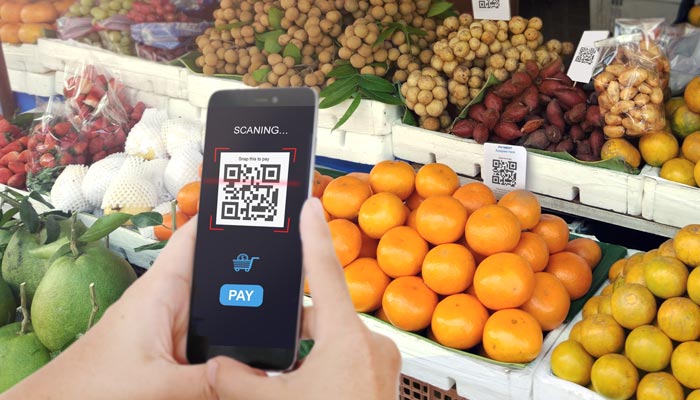A move to cashless transactions could mean less opportunities for financial institutions with bad intentions to launder money, says Professor Tom Smith, who heads the Department of Applied Finance at Macquarie Business School.

Cash has dropped to 37 per cent of consumer payments.
“Australia is not quite at the point of a cashless society, but we're slowly heading towards it,” Smith says.
Contrary to belief that banks are behind the push to reduce the importance of cash, Smith says that electronic transactions still incur significant costs for banks to manage, despite delivering revenue through merchant and transaction fees.
The real push to cards away from cash comes from consumers, who value the convenience of contactless payments, he says.
“In fact, rogue banks do better with a cash economy as there’s far more opportunities for money laundering, where there’s money to be made.”
He points out that following the Hayne Royal Commission into the finance industry, banks will be focusing on compliance so that money laundering is less likely to occur.
With digital payments, there’s a digital record kept of where the money came from and where it’s going to.
However, the largest civil fine in Australia’s corporate history – of $700 million – was imposed on the Commonwealth Bank in June last year, for breaching anti-money laundering laws.
AUSTRAC – the federal financial intelligence agency – found the bank had failed to report millions of dollars in suspicious deposits, transfers and accounts.
The bank was accused of 'serious and systemic failures' including the late filing of more than 53,000 transactions over $10,000 made via ‘intelligent deposit machines'. Banks have 10 business days to report these sizeable transactions which are tracked for their potential role in crime gangs, drug and arms deals or terrorist networks.
"Even after it became aware of suspected money laundering or structuring on CBA accounts, it did not monitor its customers to mitigate and manage money laundering and terrorism financing risk,” notes a statement from AUSTRAC outlining the agreement made between the agency and the Commonwealth Bank.
“With digital payments, there’s a digital record kept of where the money came from and where it’s going to,” says Smith. “It’s much harder for rogue groups to facilitate illegal operations such as money laundering, and it’s much easier for agencies to follow the trail.”
In Australia, cards have overtaken cash as the most common everyday payment method, with the most recent Reserve Bank’s Consumer Payments Survey showing that cash has dropped to 37 per cent of consumer payments.
Reserve Bank Governor Philip Lowe recently declared that cash will become a 'niche' payment and cheques will be phased, out as consumers accelerate their take-up of digital transactions.
Exponential growth of 'tap to pay'
Professor Smith belives it’s likely that cash will be around for some time yet, but will continue to play a smaller and smaller role.
“The move to a cashless economy is happening naturally rather than happening by any decree and is driven by consumers, which is the most seamless way for it to occur,” he says.

Cheques are likely to be wound up in coming years as fewer people use them.
"Consumers love the convenience of the tap."
‘Tap to pay’ has grown exponentially in Australia, with contactless card payments rising from 20 per cent of point-of-sale card payments in 2013, to 60 per cent in 2016.
Smith says there’s been a measurable shift from cash to digital. Twenty years ago, Australians made an ATM cash withdrawal an average of about 40 times a year, but it’s now around 25 times a year.
Over the same period, electronic payments made by Australians have increased from around 100 per year at the turn of the century to an average of 500 now.
“Cheque payments have dwindled – very few people use cheques now, and there’s no doubt cheques will be wound up in coming years,” he says.
Professor Smith says that the overall impact is a positive one, as digital transactions tend to be more secure. “For example, only around 10 per cent of payments to taxi drivers are made in cash now.” That reduces risk of robbery too.
The black economy still takes billions of dollars out of the tax system in Australia.
Banks and retailers incur a greater cost in storing, recording, securing and distributing cash than they do with digital currencies, and cash transactions tend to be slower than digital, he says.
Digital transactions also reduce the size of the ‘black economy’ where people deliver goods and services for cash and don’t declare their income, thus avoiding tax.
“The black economy still takes billions of dollars out of the tax system in Australia,” Smith says.
Many people prefer to pay in cash because it can be easier for budgeting and it also protects privacy because it doesn’t leave an electronic fingerprint, which is important to some people.
However, the lack of a digital fingerprint is also associated with tax evasion and illegal transactions, so a cashless society could make both of these activities more difficult.
What risks are there in a cashless society?
While Australia still holds significant cash reserves – more than $75 billion in banknotes are in circulation, about four per cent of our $AUD1.9 trillion GDP – only about 20 to 40 per cent of banknotes are used in transactions, with 60 to 80 per cent likely to be ‘hoarded’ or saved both in Australia and overseas. Long-term low interest rates make this less costly to do.
Most banks only have enough cash for about 10 per cent of their depositors, Professor Smith says – and typically governments will guarantee deposits to prevent a ‘run’ on banks during times of financial unrest, such as the global financial crisis.
Worldwide, there’s also a push away from cash, with a 2017 report by research firm Capgemini finding that global non-cash transaction volumes grew by 10 per cent in 2016.
Even if cash and digital currencies both fail at some period of time, people will work out ways to trade.
The World Bank’s goal of Universal Financial Access by 2020 aims to ensure all adults have access to a transaction or deposit account, whether through a bank account, payment card, mobile wallet, or other financial instrument. A 2015 World Bank survey in 140 countries found that 62 per cent of all adults had a bank account.
In Sweden, where cash reserves have dropped to just one per cent of GDP, the Central Bank Deputy Governor has raised concerns that the government’s role in the country’s payment systems has been replaced by private interests. Sweden is considering issuing central bank money in a digital form, to fit between cash and the money held in bank accounts.
Nightmare scenarios where governments or powerful groups control or take away access to digital money have been outlined in fiction – such as the recent TV adaptation of Margaret Atwood’s dystopian novel, The Handmaid's Tale.
However, Smith says that these scenarios are unlikely – and history has shown that societies rapidly revert to a barter economy when currencies fail.
“We've had exchange without money for thousands of years,” he says. “Even if cash and digital currencies both fail at some period of time, people will work out ways to trade.”
Professor Tom Smith is Head of the Department of Applied Finance in the Macquarie Business School.
First published February 14, 2019



